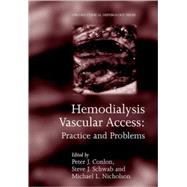Hemodialysis Vascular Access Practice and Problems
, by Conlon, Peter J.; Nicholson, Michael L.; Schwab, Steven- ISBN: 9780192629425 | 0192629425
- Cover: Hardcover
- Copyright: 4/6/2000
This book describes the current status of vascular access for patients with end-stage renal failure who require dialysis. The book highlights controversial areas and problems and describes differences in practice in USA and Europe. Vascular Access is the Achilles heel of dialysis. In the United States and Europe in 1999 there were in access of 400,000 patients maintained on dialysis. The success of this life sustaining procedure is dependant on being able to successfully access the circulation and obtain blood flows of between two and five hundred mls per minute three times a week. In 1964 Cimino and Brescia described what remains today the premier form of vascular access. Not long after the development of the Cimino Brescia fistula it became apparent that there were patients in whom it was either impossible or extremely difficult to create an adequate fistula for dialysis. As dialysis technology has been applied to older and sicker patients this trend has continued, such that in the United States the majority of patients starting dialysis do not have a primary fistula. The maintenance of long-term vascular access in patients who do not have a primary fistula requires considerably increased effort. In recent years a number of innovations have considerably increased the success of long- term vascular access in these patients. This book brings together these developments, including strategies to prospectively detect impending vascular access failure, and strategies to pre-emptively prevent graft failure. Simultaneously with these developments there have been dramatic improvements in our understanding of the pathophysiology of graft failure, this improved understanding of the biology of access failure are beginning to bring to the clinical arena newer strategies to delay graft failure.







